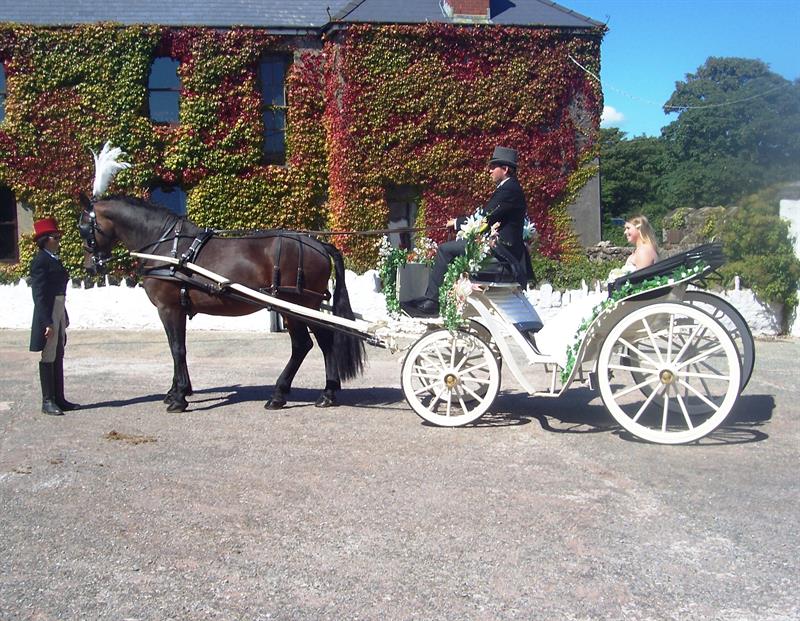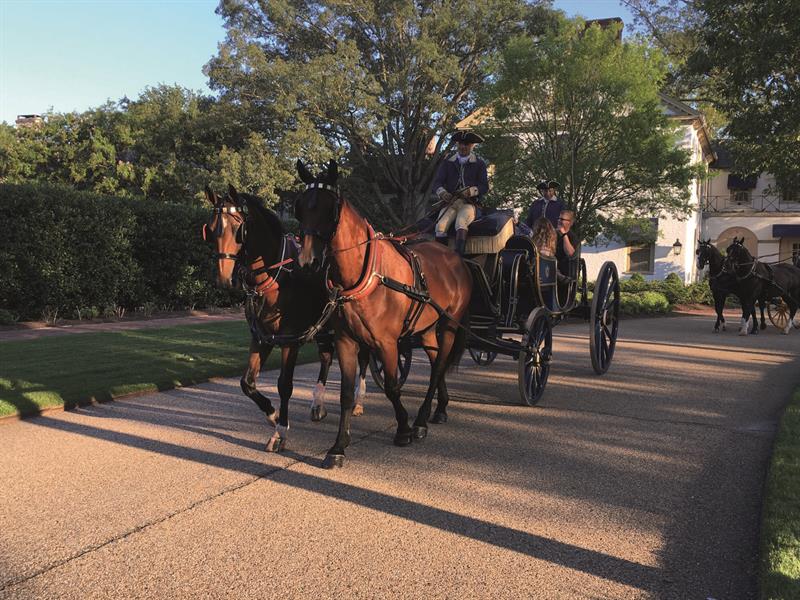Regal, rare and a royal favourite. In our series on rare breeds, Susan Dunne discovers more about a once very popular carriage horse, the multi- talented Cleveland Bay.
Elegant, clean limbed and regal, the Cleveland Bay is the only native British horse which does not belong to the heavy horse group. Despite its versatile history in ridden and driven work, this most quintessential English driving horse is ranked as critically endangered by the Rare Breeds Trust. There are currently only 500 pure-breeds worldwide and only about 70 foals registered each year.
History
Named after its colouring and the Cleveland district of Yorkshire, the horse is descended from the medieval pack horse or Chapman horse which carried travelling salesmen. Cross breeding with Barb horses and Spanish Warmbloods produced the now extinct Yorkshire Coach Horse of the 18th Century. With the decline of coaching there was a demand for elegant pairs of Cleveland Bays to pull private carriages such as the Barouche and the Victoria but the continued demise of the driving horse was inevitable. A er the Second World War the Cleveland Bay was facing extinction and by the 1960’s there were just six breeding stallions left.
Royal Rescue
The survival of the breed owes much to the intervention of the Queen who purchased the stallion Mulgrave Supreme in 1962. Originally designated for export, this remarkable colt went on to sire so many progeny that within 15 years there were 36 purebred stallions within the UK. There are currently 18 working Bays at the Royal Mews whose principle function is to drive high commissioners and ambassadors presenting their credentials to the Queen, although they are also a much-loved feature at Ascot. The Cleveland Bay was originally favoured by Prince Phillip who competed teams at international level. Another regal connection is the Emperor of Japan who keeps a small stud of Bays for ceremonial duties.
Colonial Williamsburg
Demand overseas and particularly from the US has led to the breed being exported across the globe and has helped ensure its future. In the US, Cleveland Bays feature in the living history museum of Colonial Williamsburg in Virginia. The museum which recreates the colonial past of the 18th century runs a rare breeds programme which helps to preserve and showcase animals of the period. The Museum first started using Cleveland Bays in 2016 and from 2017 started a breeding programme with two pure bred mares. They are anticipating four new foals this year, three by the stallion Lord Brigadoon and a fourth by Stainmore Wol ound. Paul Bennett who is director of the Coach and Livestock Department of the museum explains their function: “The horses are used for a combination of riding and driving. The first two horses we acquired were used by our actors portraying Martha Washington and the Marquis de Layfette. We currently use one as a carriage horse for our carriage operation. My team are in the process of training the other two Clevelands to drive as well as ride.
“The Cleveland Bay had a connection with Virginia due to the fact that the governor Lord Dumore, brought a descendant of the Cleveland Bay here to Virginia in 1767 and when he was ousted as governor his horse, Wild Ayer, returned to Leeds England where he spent ten more years at stud and was considered so important to the breed he was put back into the very first stud book fifty years after his death.
“I chose the Cleveland Bay due to its connection with Virginia, its rare breed status and its gentle temperament. It allowed me to increase our Rare Breeds programme and raise awareness of this critically endangered breed.”
Kate Telford
Kate Telford has been involved with Cleveland Bays all her life, including buying from the Royal Mews, and uses them in her horse drawn carriage company. She says: “They have a strong connection with royalty. I use them for both riding and driving and I find they are tremendous all-rounders with lots of stamina and good paces.”
For Kate driving Clevelands is clearly a labour of love: “I live and breathe them, especially when driving.” They are not however a horse for the uninitiated as Kate explains: “You ask them to do things, they are very strong characters and because they are strong-minded they’re not for everyone. You need to know what you’re doing.” Kate has found however, that working with them reaps tremendous rewards: “Mine are so biddable and totally on my wave length. They are very level horses with a wicked sense of humour”
Chris Berens-Scott
Chris and her husband Paul Berens keep their 8 Cleveland Bays in South West France, although Chris works in Luxemburg, and have showcased the breed as a driving horse across the continent. Importing their first four Clevelands in 1997, Chris explains: “We’d just got married and wanted a project and as we’re both quite tall we were looking for horses to ride and drive. We’d seen Prince Phillip driving his team of Cleveland Bays in Germany and thought ‘that’s exactly the kind of horse we need!’”
Having researched the breed and discovered their great rarity, they travelled to England intending to get two and came back with four youngsters which they later transformed into a team with help from the French champion driver, Benjamin Aillaud who also taught Chris and Paul. They went on to buy geldings to add to the herd and also started a breeding programme with imported semen from the UK, eventually sending two of their mares who had “done their bit” for driving back to Yorkshire as brood mares.
A er doing driving trials they came down on the side of traditional driving over FEI and they now enjoy private driving, attending coaching meets and actively encouraging people to take an interest in traditional driving. Chris says “Coaching was really my thing and my husband already had some antique carriages. We went to lots of Concours d’Elegance and Attelage d’Tradition meets. We did traditional driving for several years across Germany, Holland, Belgium and France where lots of the top profile drivers got to know about the Cleveland Bay through us.”
Summing up the Cleveland Bay, Chris says: “They are very good for what we do which is traditional, club and coach driving. Other horses get hot and hyped up in procession but ours will just plod along happily. They love to work and if they don’t get to drive they run up to the fence with a ‘We’re bored’ expression. They practically jump in to the lorry when we take them out. They all live happily as a herd, they’re happy to travel and happy to come home.
“I’d say they mature later at about 7 or 8 so it’s best not to start them too young. The older they get the better they get – 2 of ours are 19 and still going really strong – a child could ride them and we’d happily drive 8 of them together if we could manage it! They aren’t as showy as the Hackney or Dutch warmblood but then no one gets jealous of us and they are such a lovely colour of bay with long black stockings, shiny coat and that really special Cleveland Bay face which everybody comments on. I’d describe them as well-behaved members of the family!”




This article first appeared in the April 2019 issue. Subscribe here to keep up to date with the world of Carriage Driving
